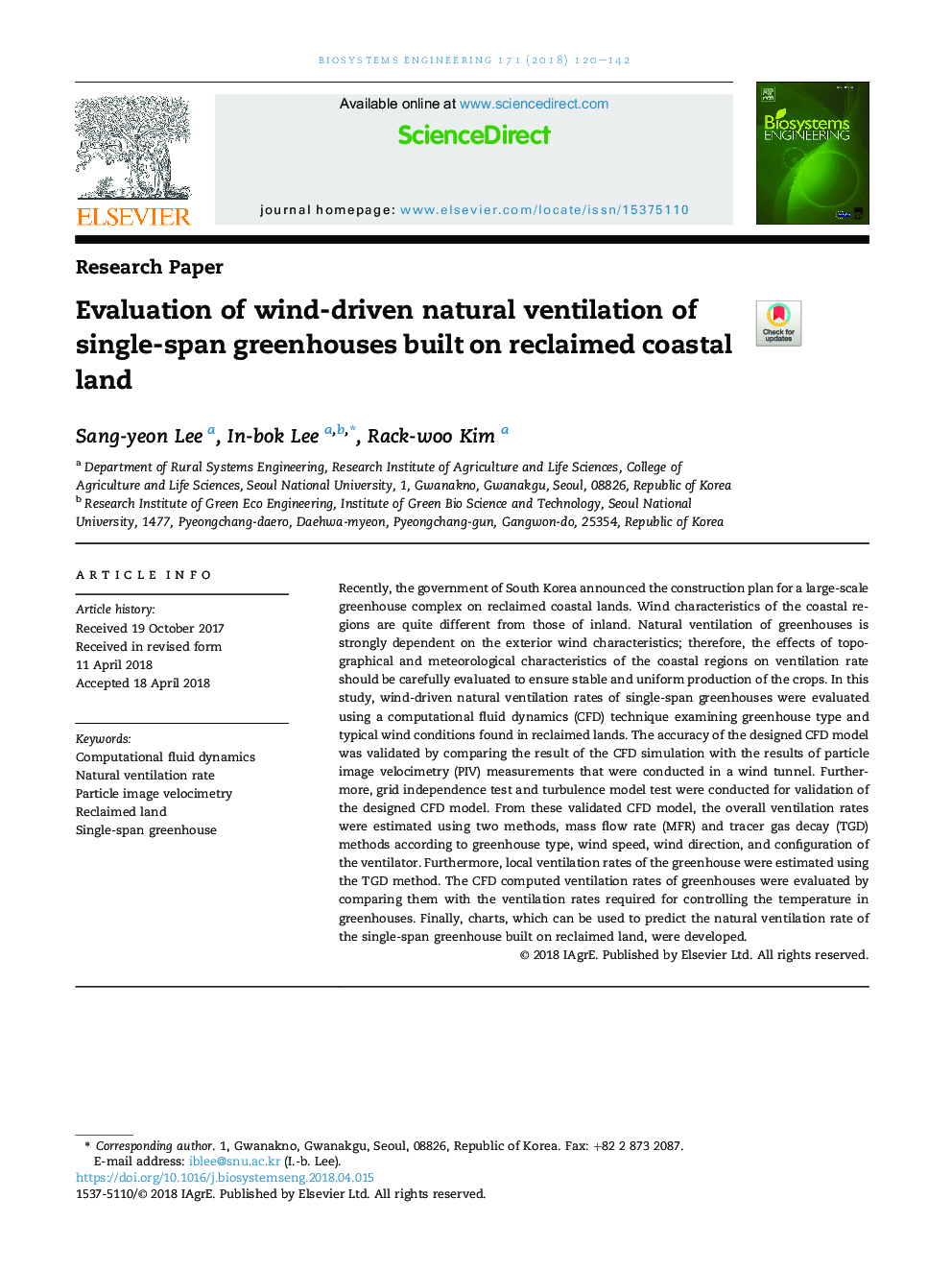| Article ID | Journal | Published Year | Pages | File Type |
|---|---|---|---|---|
| 8054663 | Biosystems Engineering | 2018 | 23 Pages |
Abstract
Recently, the government of South Korea announced the construction plan for a large-scale greenhouse complex on reclaimed coastal lands. Wind characteristics of the coastal regions are quite different from those of inland. Natural ventilation of greenhouses is strongly dependent on the exterior wind characteristics; therefore, the effects of topographical and meteorological characteristics of the coastal regions on ventilation rate should be carefully evaluated to ensure stable and uniform production of the crops. In this study, wind-driven natural ventilation rates of single-span greenhouses were evaluated using a computational fluid dynamics (CFD) technique examining greenhouse type and typical wind conditions found in reclaimed lands. The accuracy of the designed CFD model was validated by comparing the result of the CFD simulation with the results of particle image velocimetry (PIV) measurements that were conducted in a wind tunnel. Furthermore, grid independence test and turbulence model test were conducted for validation of the designed CFD model. From these validated CFD model, the overall ventilation rates were estimated using two methods, mass flow rate (MFR) and tracer gas decay (TGD) methods according to greenhouse type, wind speed, wind direction, and configuration of the ventilator. Furthermore, local ventilation rates of the greenhouse were estimated using the TGD method. The CFD computed ventilation rates of greenhouses were evaluated by comparing them with the ventilation rates required for controlling the temperature in greenhouses. Finally, charts, which can be used to predict the natural ventilation rate of the single-span greenhouse built on reclaimed land, were developed.
Related Topics
Physical Sciences and Engineering
Engineering
Control and Systems Engineering
Authors
Sang-yeon Lee, In-bok Lee, Rack-woo Kim,
